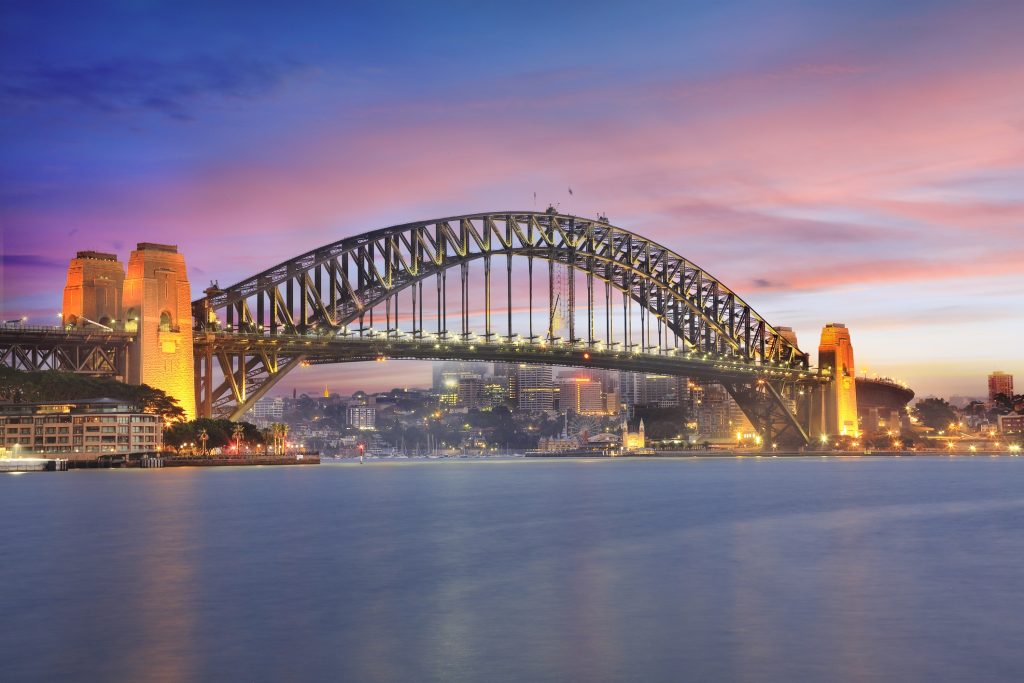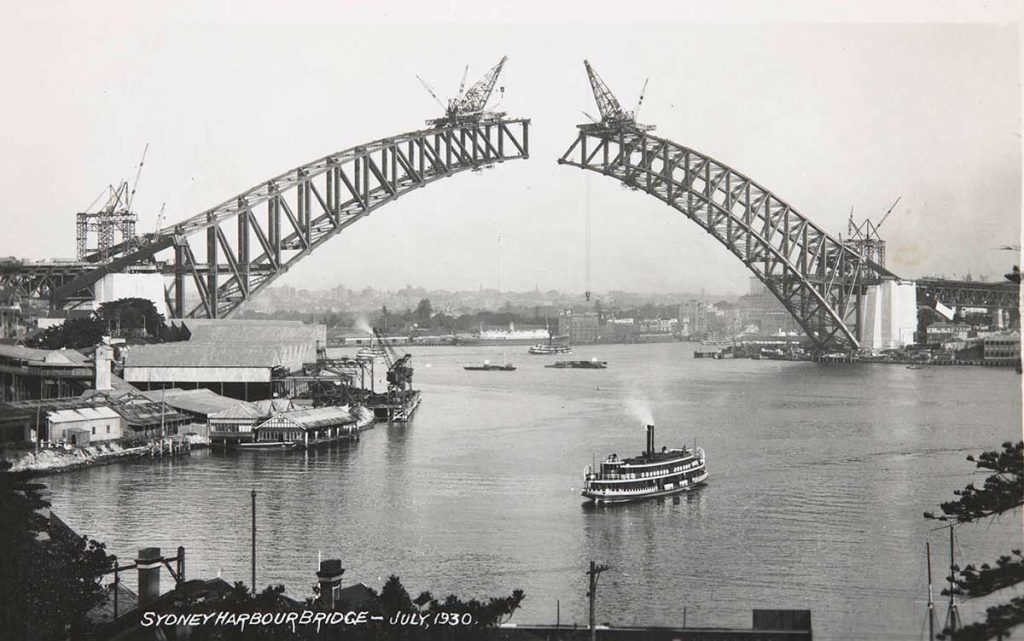
What if the Sydney Harbour Bridge was built today? The Sydney Harbour Bridge, a marvel of its time, stands as a testament to daring engineering and visionary infrastructure. It’s a story of people working hard to make something extraordinary and inspiring a nation. But what if we built this iconic structure today? How would modern technology and tools make it easier? This piece will explore the challenges faced by the original builders and what may have been different if the bridge were constructed with modern technology.
The Original Struggles
The Sydney Harbour Bridge project began in 1923 and was completed in 1932, nearly a decade of construction punctuated with financial strain, economic turmoil, and technical hurdles. Here are some key stats and challenges from the original build:
• Timeframe: 9 years
• Cost: £6.5 million (about AUD 1.5 billion today)
• Economic Impact: The Great Depression led to higher borrowing costs.
• Labour: Heavy reliance on manual labour and rudimentary tools.
• Material Sourcing: High-quality steel and concrete were in short supply.
Ken Morrison, the former CEO of the Property Council of Australia, noted that if the Sydney Harbour Bridge were assessed against today’s infrastructure metrics, the bridge might not have been built at all. He pointed out that the economic viability alone might have deemed the project too costly and not justifiable through a conventional benefits-cost analysis. The bridge did take the state of New South Wales 56 years to pay off, highlighting the enormous financial burden it represented at the time. But that is only one part of the story. As Sydneysiders will tell you, the bridge has paid for itself many times over in so many other ways.

The transformational vision of the Sydney Harbour Bridge was best articulated by John Bradfield in his successful tender. Bradfield explained the reasoning behind his preferred design, saying the bridge would bring together the past, present, and future of this young nation.
“In the upbuilding of any nation, the land slowly moulds the people, the people with patient toil alter the face of the landscape; constructing roads and railways, building factories and rearing cities, they humanise the landscape after their own image. Thus, the years to come will result in the perfected product, land and people, body and soul, bound together by innumerable and subtle ties,” he wrote.
“Future generations will judge our generation by our works. For that reason and from considerations of the past, I have recommended granite, strong, imperishable, a natural product, rather than a cheaper artificial material, for the facing of the piers, although the cost is £240,000 greater; humanising our landscape in simplicity, strength, and sincerity.”
Enter Modern Technology
If the bridge were built today, the construction process would be materially different. Modern technologies and information systems would have streamlined project timeframes, improved construction visibility, and enhanced safety.
Safety: The human stories behind the Sydney Harbour Bridge are tales of tenacity and resilience. The workforce, comprising over 1,400 workers, battled treacherous working conditions. Working at dizzying heights and over deep waters, the workers showed immense bravery. Tragically, this monumental task came with a human cost. Sixteen workers lost their lives during the construction, a sombre reminder of the sacrifice that went into building this engineering wonder.
• Enhanced Safety Procedures: Today, rigorous safety standards and advanced personal protective equipment (PPE) would drastically reduce the risk of accidents. Modern safety protocols, regular training, and strict adherence to safety regulations would ensure a safer working environment.
• Advanced Safety Technology: The use of drones for site inspections, real-time monitoring systems, and wearable safety devices would help in early detection of potential hazards, preventing accidents before they occur.
Project Management Software: In the 1930s, engineers had to rely on paper blueprints and manual calculations. Today, information models and software offer powerful tools, advanced modelling, and real-time updates, allowing for better planning, visualization, and collaboration.
• Enhanced Coordination: Improved collaboration among architects, engineers, and contractors would reduce errors and rework.
• AI Assistance: Generative AI provides smart, automated solutions for complex tasks, enhancing decision-making and efficiency.
• Time Savings: 3D tools could cut the planning and design phase significantly, potentially shaving years off the project timeline.
Advanced Materials: In the original construction, prefabricated sections were used, but the materials and methods were far more rudimentary compared to today’s standards. High-strength steel and advanced composites have replaced the materials used in the 1930s. These modern materials are stronger, more durable, and easier to work with.
• Prefabrication: Today, prefabricated sections would be manufactured far more precisely and economically, ensuring higher quality and faster assembly on-site. This would drastically reduce construction time and improve overall quality.
• Sustainable Materials: Modern construction uses eco-friendly materials that reduce environmental impact, ensuring that the bridge not only serves its purpose but also contributes to a sustainable future.
Lessons for the Future
If the Sydney Harbour Bridge were built today, it would likely be a very different structure, reflecting advancements in materials, construction techniques, and project management. Modern technologies and information systems would transform the process, making it faster, safer, and more efficient. Many limitations faced by the original architects and engineers would be overcome with ease using software, highlighting how far we’ve come.
However, looking back, the Sydney Harbour Bridge was more than an engineering marvel. It represented a daring declaration of ambition and a symbol of hope during a difficult time. The difficulties encountered and conquered during its construction are integral to its legacy, alongside its iconic steel arches. Today, standing proudly over Sydney Harbour, it continues to inspire, serving as a timeless reminder that remarkable accomplishments often emerge from overcoming formidable challenges.